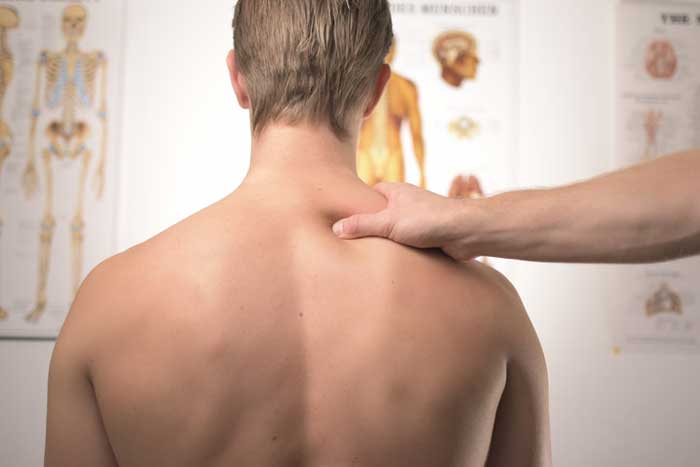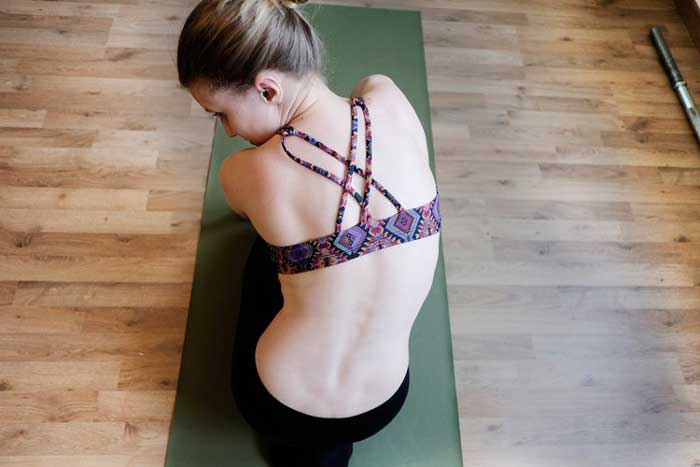 We often hear that health depends on the psychological state. A specialist in Chinese medicine tells how emotions change the structure of our spine and posture.
We often hear that health depends on the psychological state. A specialist in Chinese medicine tells how emotions change the structure of our spine and posture.
In the middle of the 20th century, Western doctors proved that some bodily diseases are actively developing against the background of negative emotions. Psychosomatics still continues to study this relationship.
Unlike western doctors, Chinese physicians have never considered the health of a person’s body apart from its psychological state. To find a disease that is not associated with emotions, it would be necessary to extract the nervous system from a person and see if the latter were sick without it. Since this is not possible, any treatment in China implies impact both on the body and the emotional background.
Scoliosis as a way not to break down
Simplified mechanics of “psychosomatic” illnesses (from the point of view of Chinese medicine – of all illnesses) is as follows: a person regularly experiences this or that emotion, which literally puts pressure on him every day. The body adjusts to this pressure so as to neutralize even more disastrous consequences.
To make it clearer, consider this idea on the example of scoliosis, i.e. a complex deformation of the spine. Today, science cannot give a 100% precise answer, why it develops.
Chinese medicine links the development of scoliosis in children to excessive psychological pressure in the family. The child’s body takes the blow, which prevents it from “breaking” psychologically. It develops scoliosis in case of a strong nerve strain.
Excessive psychological pressure can seem inconspicuous to adult family members, but if the child has a spinal curve, this is a serious reason to think about the atmosphere at home.
The skeleton literally bends under emotional pressure, allowing the child to keep the inner core. Patients with scoliosis are usually people with very bright and strong will. After external moral pressure weakens, they have the opportunity to restore their health despite the fact that scoliosis is considered a disease that is difficult to treat.
Typical examples
Here are some more examples of the illnesses that are easily healed, if a person pays attention to the body, understands the emotional background of what is happening and takes up the treatment in two directions: corrects physiological problems and realizes the psychological ones.
The neck is a sore spot of socially successful women. No matter how much we talk about social equality, a lot of women, unlike men, find it more difficult to reach high positions and bear great responsibility. We are more emotional, and the figurative expressions like “a burden on our shoulders” and “a heavy load” very often manifest themselves in the form of tension and pain in the neck.
The stoop is one of the characteristic external manifestations of regular sadness. Cartoonists and animators can easily depict the posture of a sad person in a very bright and exaggerated way: the neck and shoulders sag forward, the back is wheel-shaped, and the chest is sunken. A sad person can look relatively slim, but the brightest manifestation of this “sad” posture will be the shoulders slightly drawn forward and a hump at the base of the neck seen from behind.
Very often, this posture itself becomes a source of an unfavorable emotional background: the person is sad and hunched, but when the reason for sadness is gone, the posture remains. A person with such a spine suffers from sadness, and the shape of the body retains this feeling. In this case, working on posture improvement can radically change the emotional background.
Cardiovascular diseases developing in youth are one of the possible consequences of the chronic diaphragm stress. The diaphragm strains in response to every acute experience, but the brightest strains of the diaphragm can be seen in the people who are engaged in tough negotiations and are forced to regularly assert their rights (or the rights of the company they represent).
In the period of formation, this diaphragm stress becomes support for them and reinforces their onslaught. However, if it becomes habitual, the heart constantly lacks space – and begins to fail.
Listen to yourself
The emotions we experience are unique. So, their connection with health will be highly individual too. We gave several characteristic examples of posture violation against the background of this or that emotion, but do not rush to apply them to yourself. Learn to understand your body, increase your own sensitivity, and the connection between your personal emotions and health will become understandable and easily remediable.
The best way to develop the ability to feel your body is oriental practices, such as qigong for the spine. It will be easier for you to control emotions, and the body will become a more flexible, stable, and healthier system – which is vitally important.








